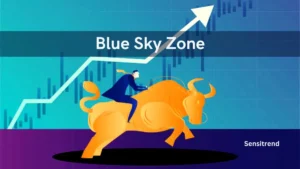The stock market offers a variety of trading instruments since it is a meeting place for the brightest minds on earth.
What is the stock market?
The stock market is a barometer of a country. The price and value of stocks can reflect the health of a country’s economy. Anyone who is willing to take a financial risk can participate in the stock market. The stock market provides a platform for the companies of a nation to raise capital to run their businesses smoothly. The public can participate in the stock market by purchasing and selling stocks and bonds. Stock exchanges offer a platform for the buying and selling of stocks (shares) and bonds.
For long-term investors who can build money over time, the stock market is an excellent place to invest. The stock market offers a variety of trading instruments since it is a meeting place for the brightest minds on earth. There has been a significant surge in new stock market investors worldwide since the Corona pandemic.
How does the stock market work?
Companies in a country use the stock market to raise capital. Companies release a percentage of their total number of shares to the public through an initial public offering (IPO) on a country’s stock exchange. The process of an IPO transfers ownership of a firm to the general public. After the listing of the IPOs, the general public can buy and sell stocks or shares of a particular company through the exchange.
Any firm can raise money to operate profitably without heavily relying on debt by listing the company through an IPO. The listed companies must abide by exchange rules and regulations. Because being transparent about their financial health and business ethics will bring inventors confidence to buy their stocks or shares.
It is possible for a nation to have more than one stock exchange to offer a trading platform. For instance, in the United States, we have the New York Stock Exchange (NYSE) and Nasdaq, whereas, in India, we have the Bombay Stock Exchange (BSE) and National Stock Exchange (NSE).
The BSE was the first stock exchange in Asia and the first to receive permanent registration under the Securities Contract Regulation Act of 1956. It was founded in 1875.
The stock exchange has indexes
A stock exchange index is a grouping of publicly traded companies. Market capitalization and industry are important considerations when building an index. A wide range of industries, including finance, information technology, pharmaceuticals, energy, FMCG, metals and mining, infrastructure, and real estate, are represented among the listed companies on the exchange.
The index is useful to measure the price movements of stocks, bonds, T-bills, and other forms of investments. It can show the overall behavior of the stock market. A base period and a base index value are taken into consideration when calculating an index.
Importance of stock market indexes
- Indices offer a historical comparison of stock market performance to those of different asset classes like gold or debt.
- The index can be utilized as a benchmark to determine how a particular equity fund has grown.
- It serves as a leading indicator of the way the economy in general or a particular sector is performing.
- Stock indexes represent the most recent data of a country.
- Financial investments and financial planning are significantly influenced by financial market applications like index funds, index futures, and index options.
Major indexes of India
On the two major Indian stock exchanges, BSE and NSE, a variety of indexes based on market size, liquidity, financial health, sectors, and free float are accessible. Broad market indices and sectoral indices are the two basic groups into which we can divide the indices. The stocks that make up the larger market indices have substantial market capitalizations and are quite liquid. However, sectoral indices also included groups of stocks belonging to the same sector.
The major indices of BSE are S&P BSE SENSEX, S&P BSE SENSEX 50, and S&P BSE SENSEX NEXT 50. And the top well-known indices of NIFTY are NIFTY 50 and NIFTY BANK.
Based on the popularity and accessibility of futures and options trading, the NIFTY provides three indices: the NIFTY 50, the NIFTY Bank, and the NIFTY Financial Services Index, or FINNIFTY.
Nifty 50
The NIFTY 50 is a diverse 50-stock index that includes 13 economic sectors of India. It gives a broad overview of the Indian economy. The value of the NIFTY 50 index will rise as a result of the top 50 Indian firms’ improved financial results. Also, the price behavior of NIFTY depends on the global financial markets and other domestic events and developments. It is a crucial trading tool for several purposes, such as operating index funds, benchmarking fund portfolios, and developing index-based derivatives.
This index is a favorite among futures and options traders worldwide due to its high liquidity and volume. The NIFTY 50 index sees a significant amount of trading volume every day, from high-net-worth institutions to retail traders.
Because it is a well-balanced index made up of the top 50 companies in India from a variety of significant sectors. Trading in the NIFTY 50 index is great for futures and options traders to hedge their equity portfolios.
Nifty Next 50
Out of the 100 top companies in India, the 50 companies excluded from the NIFTY 50 Index make up the NIFTY Next 50 Index. This is the core of the Indian stock market after the top 50 companies. This is not a tradable index in the future an option like the NIFTY 50 and NIFTY BANK indexes.
Nifty Bank
The top 12 banks from India make up the NIFTY Bank Index, or simply BANKNIFTY. The Nifty Bank Index is the backbone of the Indian financial sector and a reliable indicator of the state of the economy. This is India’s most extensively utilized liquid index after NIFTY 50, where futures and options traders carry out their daily operations. It is more active and speculative than the NIFTY 50 because of the high beta nature of the financial entities.
Nifty Financial Services or Finnifty
This index contains financial institutions including banks and insurance companies as well as other enterprises that provide financial services. A fixed number of equities with different weights are part of the index. This is a popular index, after NIFTY BANK or BANKNIFTY, that provides liquidity and price discovery to speculators in the Indian financial sector.
Nifty IT
The top 10 software firms in India make up the NIFTY IT index. The Nifty IT Index is the cornerstone of the Indian IT industry and a trustworthy gauge of the state of software services exports and global financial markets. After the NIFTY 50 and NIFTY Bank, this index is the most closely watched in India. The NIFTY IT Index companies provide world-class information services to both domestic and international customers, which greatly contributes to India’s overall growth.
Sectoral Indices: Excluding the above indices of India, there are other sectoral indices that also play a major role in making up the overall Indian stock market as a whole. The other sectoral indices are NIFTY AUTO, NIFTY ENERGY, NIFTY FMCG, NIFTY METAL, NIFTY MEDIA, NIFTY PHARMA, NIFTY REALTY, NIFTY HEALTH CARE INDEX, NIFTY CONSUMER DURABLES, and NIFTY OIL & GAS.
Indexes of U.S.A.
International stock market indices serve as trustworthy economic indicators for both the world economy and the economies of individual nations. The three indexes that American investors and the media pay the most attention to are the S&P 500, Dow Jones Industrial Average, and Nasdaq Composite.
The S&P 500
The S&P 500, often known as the Standard & Poor’s 500 indices, consists of the 500 best-performing American companies. The primary criterion for choosing the stocks for the S&P 500 index is market valuation. Although there are other factors that are quite important, such as liquidity, sector, financial strength, public float, and trading history.
The Dow Jones Industrial Average
The Dow Jones Industrial Average(DJIA) is one of the oldest and most commonly used and well-known indexes in the world. It consists of the 30 most significant and largest American corporations. The DJIA accounts for around 25% of the value of the whole U.S. stock market.
The Nasdaq Composite Index
The technology stocks of the U.S.A. make up the Nasdaq Composite Index. The Nasdaq Composite Index mostly consists of technology stocks, although it also contains stocks from the financial, biotech, insurance, and transportation industries. It is a much more volatile and speculative index than the S&P 500 and the Dow Jones Industrial Average.




